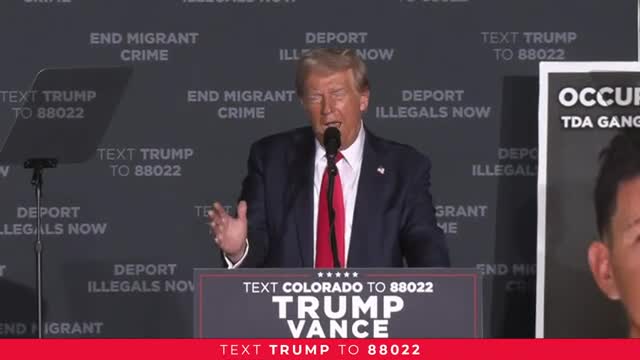Former candidate hints at potential political shakeup
October 12, 2024 | Donald J. Trump, Presidential Candidates 2024
This article was created by AI summarizing key points discussed. AI makes mistakes, so for full details and context, please refer to the video of the full meeting. Please report any errors so we can fix them. Report an error »

In a recent government meeting, discussions took a surprising turn as a participant speculated on the dynamics of political rivalries, particularly focusing on the relationships between key figures. The individual suggested that there exists a \"very small\" possibility—estimated at just 1%—that a prominent political figure harbors more animosity towards a certain female politician than towards former President Donald Trump.
The conversation shifted to the competitive landscape of political primaries, with the speaker reflecting on their own experience in a previous election. They recounted spending a substantial amount—$150 million—while competing against a rival, emphasizing the intensity of the debates and the unexpected shifts in public perception.
As the dialogue progressed, the speaker expressed concerns about the introduction of a new candidate into the race, indicating that the electorate is still unfamiliar with her. They noted that this candidate's popularity appears to be declining rapidly, likening her fall to \"crashing like a rock.\" The speaker concluded with a provocative suggestion that the political landscape might benefit from the introduction of a third candidate, hinting at the unpredictability of electoral outcomes.
This meeting highlighted the intricate and often volatile nature of political competition, underscoring the strategic considerations that candidates must navigate as they vie for public support.
The conversation shifted to the competitive landscape of political primaries, with the speaker reflecting on their own experience in a previous election. They recounted spending a substantial amount—$150 million—while competing against a rival, emphasizing the intensity of the debates and the unexpected shifts in public perception.
As the dialogue progressed, the speaker expressed concerns about the introduction of a new candidate into the race, indicating that the electorate is still unfamiliar with her. They noted that this candidate's popularity appears to be declining rapidly, likening her fall to \"crashing like a rock.\" The speaker concluded with a provocative suggestion that the political landscape might benefit from the introduction of a third candidate, hinting at the unpredictability of electoral outcomes.
This meeting highlighted the intricate and often volatile nature of political competition, underscoring the strategic considerations that candidates must navigate as they vie for public support.
View full meeting
This article is based on a recent meeting—watch the full video and explore the complete transcript for deeper insights into the discussion.
View full meeting